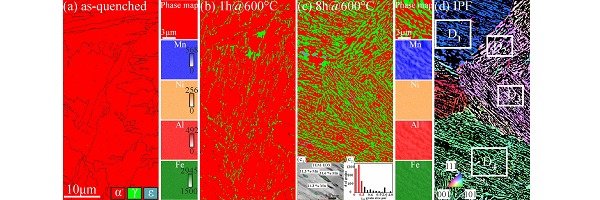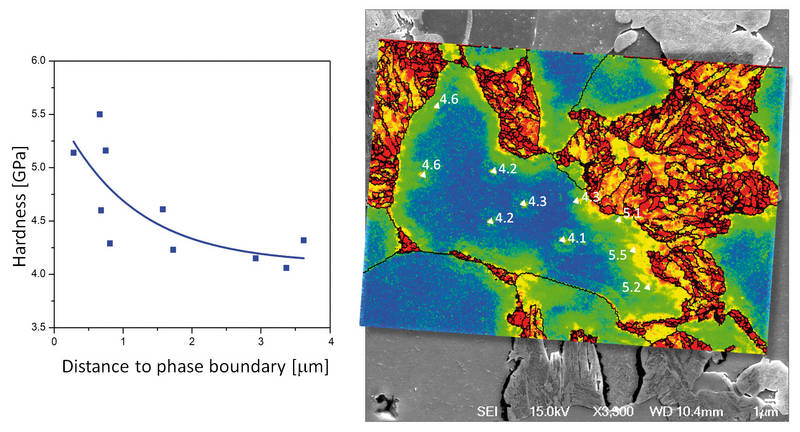
Mechanism-based Alloy Design
The group ‘Mechanism-based Alloy Design’ works on the microstructure-oriented design of advanced high strength steels, high entropy alloys as well as on engineering Al-, Ni- and Ti-alloys [1-10].

Projects focus on multiple strain hardening mechanisms such as the interplay of dislocations, twins and deformation driven phase transformations. Of special interest are confined phase transformation phenomena at grain boundaries and dislocations. Especially for materials with high strength, hydrogen embrittlement provides a challenge. Here the damage and failure mechanisms are analyzed in order to develop novel high strength materials with low susceptibility against hydrogen embrittlement. Projects in the group make intense use of the processing, mechanical testing and microstructure characterization facilities at MPIE down to the atomic scale. Projects are pursued in collaboration with partners from modelling, APT and microscopy. Theory-guided thermomechanical processing is a main pathway for optimizing the microstructures and mechanical properties of complex alloys. In this context a main objective of projects in this group lies in understanding and utilizing elemental and mechanical partitioning effects among neighboring phases on the one hand and among the matrix and lattice defects on the other hand with the aim to adjust the (meta-) stability of local phase states. Depending on phase stability, deformation driven athermal transformations can be triggered such as spatially confined transformation-induced plasticity (TRIP) and transformation-inducted twinning (TWIP). Main examples are the design of ultrafine grained, partially metastable, maraging, multiphase, medium-Manganese, martensite-to-austenite reversion and weight reduced steels for automotive, manufacturing and infrastructure applications.
